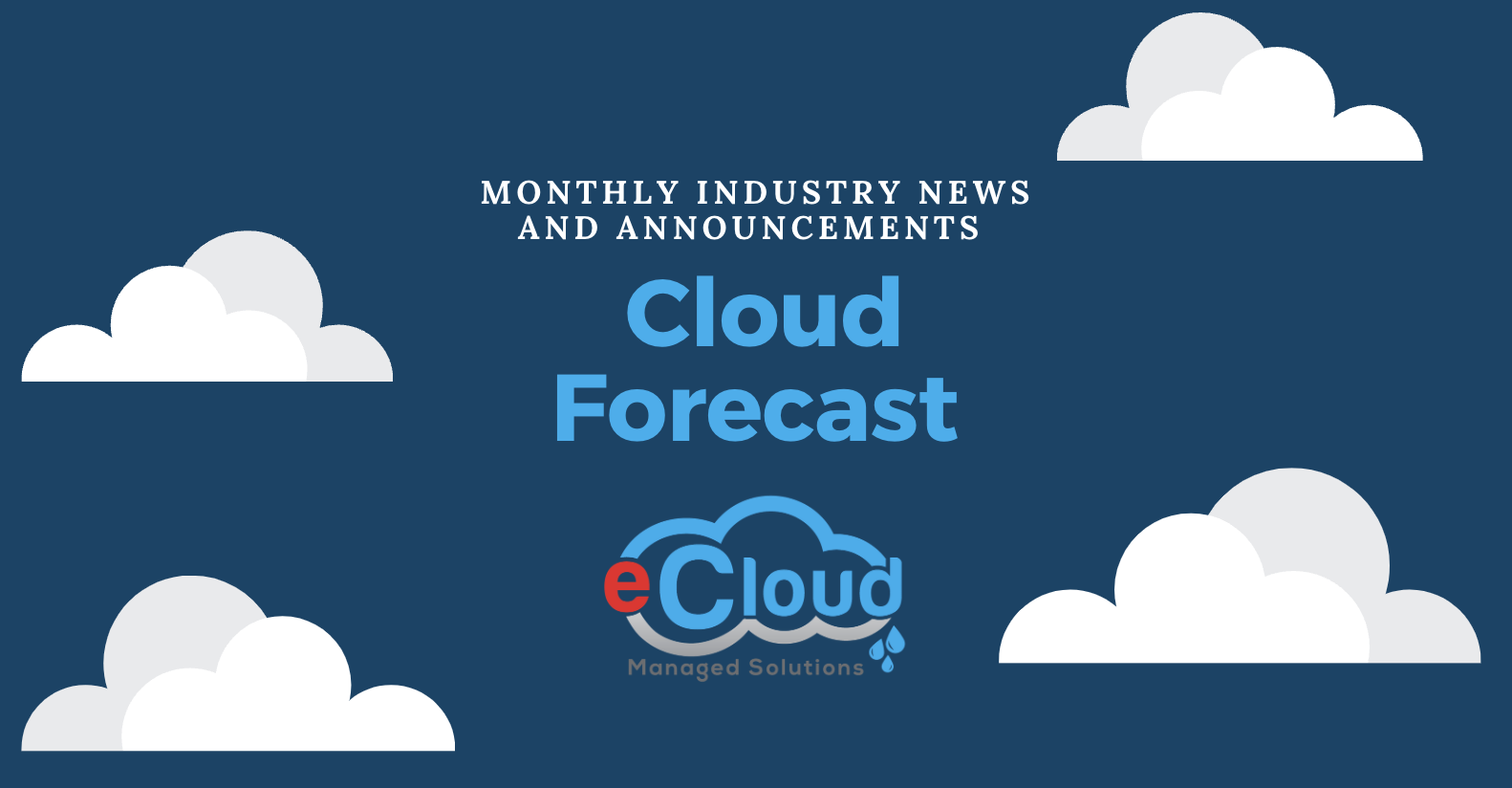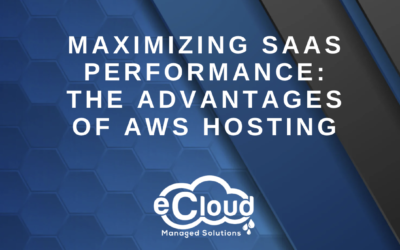The Calm Before the Storm
Cloud technology is a catalyst for innovation, yet companies are just scratching the surface of its potential.
 Cloud drives incentive for business growth. In manufacturing, in private equity, and especially in healthcare. Moderna, an American pharmaceutical and biotechnology company, was able to leverage the flexibility of the cloud to compute and store data to support their creation of mRNA protein sequences. Its web application Drug Design Studio provisioned scalable compute and storage infrastructures to successfully aid in the development of the Moderna Vaccine. By implementing on-demand availability, they integrated Infrastructure as Code and security as code and automated good-practice (GxP) compliance processes to accelerate the pace of their operations without compromising compliance. Moderna CEO Stéphane Bancel provisioned his mRNA research platform on a public cloud, which he is calling “software for life.” Cloud technology assisted Moderna in delivering the first batch of its vaccine in less than 50 days of the initial virus sequencing.
Cloud drives incentive for business growth. In manufacturing, in private equity, and especially in healthcare. Moderna, an American pharmaceutical and biotechnology company, was able to leverage the flexibility of the cloud to compute and store data to support their creation of mRNA protein sequences. Its web application Drug Design Studio provisioned scalable compute and storage infrastructures to successfully aid in the development of the Moderna Vaccine. By implementing on-demand availability, they integrated Infrastructure as Code and security as code and automated good-practice (GxP) compliance processes to accelerate the pace of their operations without compromising compliance. Moderna CEO Stéphane Bancel provisioned his mRNA research platform on a public cloud, which he is calling “software for life.” Cloud technology assisted Moderna in delivering the first batch of its vaccine in less than 50 days of the initial virus sequencing.
Moderna’s success is only minuscule to the potential of the cloud and its offerings. It’s expected that over $1 trillion in run-rate EBITDA across Fortune 500 companies will be available by 2030 and will continue to grow. For C-level executives, cloud adoption is the dog days of business and revenue growth. The unfolding of digital transformation is crucial to businesses on the doorstep of accelerating how quickly and efficiently they digitize their landscape. However, many companies are still stuck in the mud trying to wrap their head around the uncertainty of the economic value it brings. By partnering with an IT solutions expert, enterprises can pursue more ambitious goals and run automated, cloud-native processes to effectively design, build, and optimize workloads to run secure environments.
Source: McKinsey
Station Pressure High as Spotify Reflects on its Home Run with GCP
The concept of “working from home” (WFH) took on a whole new meaning in 2020 and is likely here to stay. According to Internet Retailer, digital sales accelerated at an exponential rate as the pandemic put a halt to most in-person affairs in 2020, reaching almost $4 trillion, coming from $3.46 trillion in 2019 and $2.93 trillion in 2018. From the looks of it, digital sales are growing almost as rapidly as climate change. The uptick in sales has upped the ante for companies to deliver faster and better products, prompting the use of cloud technology for enhanced business agility and performance.
 It’s become especially prevalent in the digital streaming industry, where companies like Spotify are leveraging the managed service capabilities of leading cloud provider Google Cloud Platform (GCP). Tyson Singer, VP of technology and platform, said this when opening up about Spotify’s cloud adoption: “If you can pick a cloud provider where you can influence the direction of those managed services so it fits your business needs more substantially, then it becomes a much better proposition.” We couldn’t agree more. While cloud may seem like a one way integration, it takes a mutual understanding of both companies to influence your cloud roadmap to achieve scale.
It’s become especially prevalent in the digital streaming industry, where companies like Spotify are leveraging the managed service capabilities of leading cloud provider Google Cloud Platform (GCP). Tyson Singer, VP of technology and platform, said this when opening up about Spotify’s cloud adoption: “If you can pick a cloud provider where you can influence the direction of those managed services so it fits your business needs more substantially, then it becomes a much better proposition.” We couldn’t agree more. While cloud may seem like a one way integration, it takes a mutual understanding of both companies to influence your cloud roadmap to achieve scale.
Source: Cloud Computing News
The Wrong Migration Strategy will Hit you like a Mudslide
The perfect storm to Segway into our next topic, the spike in digital sales has forced companies to be more strategic with their order fulfillment processes. Many companies have been cutting SKUs to focus only on core products. Like many other practices, this idea gained popularity for its profit enduring outcomes and leaner operations.
Similar to the hunt for improved scale and organizational focus in digital sales, cloud computing also requires strategic planning for regionalizing operations and automating solutions. Being “in the cloud” simply doesn’t cut it anymore. You need to create a sensible, cost-effective secure enterprise presence, which comes with the right planning. As we’ve seen, adopting cloud technology takes lots of deliberation, planning, and expertise, which are things you probably don’t have on-demand.
By surrendering yourself to the cloud you’ll be able to appreciate its breadth of business benefits. From flexibility, scalability, agility, cost savings, reduced complexity, to security and more, it makes great economic sense. While not the cheapest option on the market, the end result is far greater than any on-premise environment.
In a data-driven world, ubiquitous connectivity is heralded as a tenant of extreme importance. More importantly, a comprehensive cloud strategy requires streamlining the perfect mix of applications to provide maximum benefits. Which applications do you want to keep on-premise? What do you want to move to the cloud? Should you retire your applications altogether and evolve your legacy infrastructure with cloud-based software? The list goes on. Whether you’re running in a hybrid environment or are not yet in the cloud, check out our website to learn how we’ll help you implement the best strategy for your cloud-centric approach. We’ll take a vendor-agnostic approach to develop an integrated toolchain that aligns perfectly with your business needs so you won’t have to endure any more rainy days.
Lightning on the Horizon: Principles of Cloud Economics
Cloud adoption is no longer a question of “if” but “how fast.” It’s a prerequisite in the modern area. More than 90% of enterprises are using cloud technology in some way. In fact, the leading providers in the industry, AWS, Google Cloud Platform, and Microsoft Azure, reported tripling their capital-expenditures investment between 2015 and 2020.
Enterprises are becoming increasingly dependent on consuming infrastructure rather than owning it. What does this mean? The promise of a flexible infrastructure provided by a third-party vendor will enable businesses to perform at the top of their game while remaining cost-efficient through a plethora of tools and services leveraged by MSPs. In short, your business will be more malleable when you learn to transform underutilized capital expenditures into optimally allocated disbursements. 
Given our unique experience as an MSP, we’ve noticed some key takeaways when it comes to value capture. How you source and consume the cloud. Cloud solutions come with digestible consumption models which is the prime reason of interest, but the approach is what’ll get you those all-enticing cost savings. Unexpected heat strokes might occur when enterprises approach cloud computing with a traditional sourcing mindset. Hence why you need to be making conscious decisions in real-time to determine the right direction for your company at any given time.
Consuming the cloud is arbitrary and complex, so here are some ways you can derive value by transforming your sourcing and consumption approaches:
1. Understand the Supply and Demand-Cloud economics is a demand
With server, storage, security, and recovery assets being commodities, enterprises are hit with a flexible pool of devices to aid in minimizing overall spend. When you monitor your assets in real-time, you’re able to track and update your demand, which prompts many businesses to focus on consolidating volume and standardizing SKUs. By focusing on the price and quantity of their infrastructure, enterprises can have a better sense of how to optimize their solutions more effectively. Having those demand-driven variables as your anchor will enable economies of scale.
2. Granular forecasting of your cloud spend will go a long way
It’s a cloud world, we’re all just living in it. Optimizing the consumption of your cloud is key. When looking to gain control of your cloud spend, consider this: what funding options are available for my workloads? How long is the capacity required, and should I purchase reserved capacity rather than on-demand? You understand the business and we’ll understand the technical drivers of your consumption method. A third-party host (like eCloud) can implement solutions like reserved instances to help you make better-informed business decisions.
Since Cloud is elastic, the pay-as-you-go model will help you consolidate underutilized resources and right-size them for the workloads you are occupying to cut costs. Of course, this isn’t to say you have to do this all on your own, we can help you optimize your environment by deploying methods such as Amazon EC2 Reserved Instances, Amazon Elastic Block Store, and much more. Contact us if you’re looking for available funding options for your current environment to provide greater visibility of your cloud spend.
April Air
What’s in the air this April? You guessed it! A little bit of O2, N2, and a WEBINAR. That’s right, we’re hosting a webinar. Join us on 4/21 at 11 am to listen to our very own Managing Partner Eric Sanders and AWS Solutions Architect Tom Staab rain on the benefits of running your Windows capabilities on AWS cloud. Registration below. Be sure to share the news with your friends and colleagues. Hope to see you there! RSVP Now
Author: Eric Sanders, Managing Partner

________________________________________________________________________




